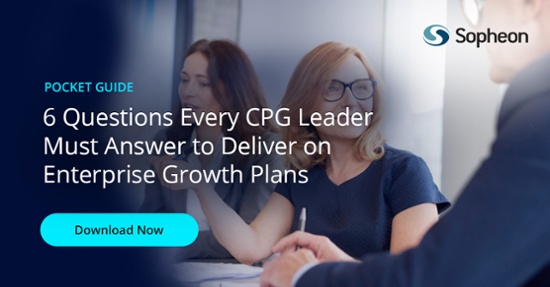Reading time: 3 minutes
Managing CPG enterprise growth plans with confidence requires NPD leaders to look closely at their portfolios. Having the right systems and innovation processes in place to illuminate gaps in planning to ensure they steer product and brand portfolios toward greater short- and long-term strategic success in meeting goals.
CPG companies must consistently innovate and get new products to market to grow and stay ahead of the competition. The right innovation management strategy is critical for success. Misplaced priorities can waste time and money, and inefficient processes can waste resources and slow time-to-market.
Above all else, innovation leaders need to remain agile enough to respond to market shifts, resource scarcity, and other moving targets that often change during the product development lifecycle. Sound portfolio and innovation process management are the backbone of any enterprise growth strategy.
Given this, why, when surveyed by Consumer Goods Technology, did nearly a quarter of CPG executives surveyed indicate they didn’t have enough high-value projects in the pipeline? The exact number said they couldn’t tell if they had enough resources to manage their NPD portfolios.
Managing CPG enterprise growth plans with confidence requires NPD leaders to look closely at their portfolios. Having the right systems and innovation processes in place to illuminate gaps in planning to ensure they steer product and brand portfolios toward greater short- and long-term strategic success in meeting goals.
Here are six innovation management questions business leaders need to answer with confidence to determine if their innovation management strategy is sound, streamlined, and yielding profitable investments.
1. Does our innovation process help us take good NPD risks?
Get a real perspective on portfolio status to make informed decisions. Having a comprehensive view of multiple investment scenarios helps business leaders answer this question. This requires an ability to see and respond to financial and product shifts quickly.
2. Will our NPD investments deliver on our financial growth targets?
Filling gaps in the NPD portfolio should be done pro-actively. When these gaps are visible at all points on the innovation journey, it gives leaders the foresight to see the impact of portfolio decisions prior to execution. Real-time data dashboards will help leaders answer tough business questions.
3. Is our innovation management strategy helping us prioritize our NPD investments and resources?
Aligning resources with portfolio growth-drivers is essential for getting NPD teams working on the right initiatives. Deciding what to fund and what to kill or pause can be tough. This means business leaders need to see portfolios ranked in order of priority to ensure they focus their limited resources on the most valuable initiatives.
4. Are we getting new products to market fast enough?
Missed market windows are among the most frequent causes for product failure and unprofitability. Leaders need a holistic view to see how cycle time has evolved historically and learn how to speed up stages in the future. Having a digitalized innovation management strategy can help CPG leaders create realistic revenue assumptions based on actual time-to-market.
5. How can we structure our innovation process to improve on our past performance?
Ongoing assessments – with an accurate view of past successes and failures – can help innovation leaders prioritize high-value projects, eliminate low-value projects, and sharpen their focus on strategy execution.
6. Is our product portfolio strategy aligned with our enterprise growth strategy?
Timely data and analytics are of primary importance when managers assess their portfolio status. When business leaders are able to compare their current portfolio to portfolio snapshots from the last cycle, they can spot trends and mitigate risk better. Assessing the portfolio status should be done frequently to ensure CPG executives are making sound portfolio decisions aligned with their innovation growth strategies.
Without consistent, accurate and timely answers to these fundamental portfolio planning questions, growth is inconsistent and incremental, targets are missed, and companies may fail to capture new market opportunities.
Download this pocket guide to see how CPG leaders confidently answer these six questions and achieve growth plans.







